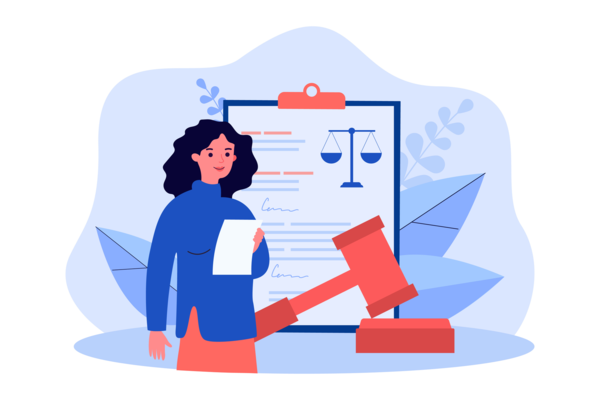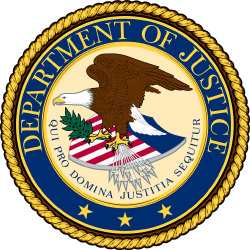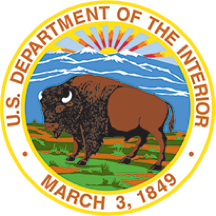Governance
Good digital governance leads to better internal team performance as well as better public digital experiences.
Governance provides a framework for decision-making by establishing standards and procedures and clarifying roles and responsibilities. Digital governance encompasses all aspects of website management and operation, including content, design, technical infrastructure, security, funding, and product, project, and program management.
Related Policy
21st Century IDEA & M-23-22

Governance: essential knowledge
-
An introduction to digital governance
Get an overview of the internal systems and processes used to manage digital presence.
-
What are agency reporting requirements?
Learn what the Office of Management and Budget (OMB) requires federal executive agencies to complete by September 2024; one year after M-23-22 issuance.
-
Who’s on your digital dream team?
Learn about the various roles your agency could include on your web teams.
-
Required web content and links
For executive branch websites, various policies require us to provide certain content, and provide links to content from specific places.
-
Checklist of requirements for federal websites and digital services
Learn about high-level policies that cover basic requirements for all websites and digital services.
Governance events
DAP Learning Series: Agency Analytics Governance
Governance news
Department of Labor, General Services Administration to centralize government benefits information on USA.gov and USAGov en Español
In September 2024, Benefits.gov will be discontinued, with its services and information moved to USA.gov and USAGov en Español. This change, which aligns with Executive Order 14058: Transforming Federal Customer Experience and Service Delivery to Rebuild Trust in Government, aims to create a seamless, user-friendly experience for accessing government benefits in both English and Spanish. The new platform, with a focus on equitable access to information, will feature improved navigation and benefit-finding tools.— via General Services Administration

Back to basics in the age of AI
The federal government is actively discussing the transformative potential of artificial intelligence (AI). It has the potential to transform our digital service delivery, automate tasks, and enhance data analysis. However, AI also presents challenges and risks such as bias and ethical concerns. The team at 18F provides a quick overview of AI, its place in government today, and the techniques and frameworks they are currently using to navigate this complex new landscape.— via 18F

Federal customer experience: OMB has taken actions to implement cross-agency priority goals
In 2021, the President’s Management Agenda identified federal customer experience as a priority area for improvement. To implement this priority area, the Office of Management and Budget (OMB) set two long-term, cross-agency priority (CAP) goals. In this study, the Government Accountability Office (GAO) reviews OMB and selected federal agencies’ efforts towards these CAP goals. Learn about actions taken by OMB and selected High Impact Service Providers (HISPs), how OMB has facilitated interagency collaboration, and the extent to which OMB has overseen and assessed progress on these CAP goals.— via Government Accountability Office

FedRAMP governance
The Federal Risk and Authorization Management Program (FedRAMP) has recently updated its governance structure to better serve its customers. Learn about their recently-formed FedRAMP Board, composed of federal executives; the FedRAMP Technical Advisory Group (TAG), composed of technology experts; and updates made to the Federal Security Cloud Advisory Committee (FSCAC). These groups collectively aim to strengthen and expand FedRAMP’s cloud service capabilities.— via FedRAMP

Why some technologists choose public service
The General Services Administration (GSA) employs nearly 12,000 people who provide services to federal agencies and the public, and has been recognized as one of the top federal agencies to work for, emphasizing a people-first culture. Through the Tech to Gov initiative, GSA’s Technology Transformation Services (TTS) has successfully recruited top tech talent to enhance digital government services. Get to know some of GSA’s newest technologists.— via General Services Administration

Resources on Governance
-
Requirements for strengthening the federal government’s commitment to digital accessibility
Learn how to implement Section 508, and strengthen and maintain your agency’s commitment to digital accessibility.
-
Requirements for the registration and use of .gov domains in the federal government
Learn how to implement the DOTGOV Online Trust in Government Act and understand how to register federal internet domain names.
-
Requirements for improving access to services for people with limited English proficiency (LEP)
Learn how to strengthen and improve meaningful language access for all people in the U.S., regardless of the language they speak.
-
Requirements for improving the management of federal programs and projects
Learn how to implement the Program Management Improvement Accountability Act to deliver better websites and digital services.
-
An introduction to trust
Guidance on how to build government websites that people can trust.
-
Checklist of requirements for federal websites and digital services
Links to relevant laws, policies, and regulations for federal agencies.
-
Required web content and links
Various policies require you to have certain content—or provide links to content—from specific places on your website.
-
OMB Circular A-130
Managing Information as a Strategic Resource
-
An introduction to digital governance
Learn why governance is essential to digital experience.
-
Requirements for delivering a digital-first public experience
Learn how to implement 21st Century IDEA to design and deliver better websites and digital services.
Tools and Services
-
Section508.gov
Guidance for federal agencies on IT accessibility compliance.
More News and Events on Governance
60 posts
Department of Labor, General Services Administration to centralize government benefits information on USA.gov and USAGov en Español
In September 2024, Benefits.gov will be discontinued, with its services and information moved to USA.gov and USAGov en Español. This change, which aligns with Executive Order 14058: Transforming Federal Customer Experience and Service Delivery to Rebuild Trust in Government, aims to create a seamless, user-friendly experience for accessing government benefits in both English and Spanish. The new platform, with a focus on equitable access to information, will feature improved navigation and benefit-finding tools.— via General Services Administration

Back to basics in the age of AI
The federal government is actively discussing the transformative potential of artificial intelligence (AI). It has the potential to transform our digital service delivery, automate tasks, and enhance data analysis. However, AI also presents challenges and risks such as bias and ethical concerns. The team at 18F provides a quick overview of AI, its place in government today, and the techniques and frameworks they are currently using to navigate this complex new landscape.— via 18F

Federal customer experience: OMB has taken actions to implement cross-agency priority goals
In 2021, the President’s Management Agenda identified federal customer experience as a priority area for improvement. To implement this priority area, the Office of Management and Budget (OMB) set two long-term, cross-agency priority (CAP) goals. In this study, the Government Accountability Office (GAO) reviews OMB and selected federal agencies’ efforts towards these CAP goals. Learn about actions taken by OMB and selected High Impact Service Providers (HISPs), how OMB has facilitated interagency collaboration, and the extent to which OMB has overseen and assessed progress on these CAP goals.— via Government Accountability Office

FedRAMP governance
The Federal Risk and Authorization Management Program (FedRAMP) has recently updated its governance structure to better serve its customers. Learn about their recently-formed FedRAMP Board, composed of federal executives; the FedRAMP Technical Advisory Group (TAG), composed of technology experts; and updates made to the Federal Security Cloud Advisory Committee (FSCAC). These groups collectively aim to strengthen and expand FedRAMP’s cloud service capabilities.— via FedRAMP

Why some technologists choose public service
The General Services Administration (GSA) employs nearly 12,000 people who provide services to federal agencies and the public, and has been recognized as one of the top federal agencies to work for, emphasizing a people-first culture. Through the Tech to Gov initiative, GSA’s Technology Transformation Services (TTS) has successfully recruited top tech talent to enhance digital government services. Get to know some of GSA’s newest technologists.— via General Services Administration

Now available: Trusted Tester for Web Certification courses, version 5.1.3
The Department of Homeland Security (DHS) has updated its Trusted Tester program courses. It features six improvements, including accessible plain language, adjusted exam requirements, and enhanced course design. The updated curriculum aligns with the latest Trusted Tester Conformance Test Process for Web, offering a more efficient learning experience. Enrollment is open via the Training Portal, and inquires can be directed to the DHS Accessibility Helpdesk for assistance.— via Section508.gov

Meet your Digital Experience Council
The Digital Experience Council plays a critical role in coordinating governmentwide efforts and assisting agencies in delivering digital experiences that meet the public’s needs and expectations.
Justice department to publish final rule to strengthen web and mobile app access for people with disabilities
On April 8, Attorney General Merrick B. Garland signed a final rule under Title II of the Americans with Disabilities Act (ADA) to ensure the accessibility of web content and mobile applications for people with disabilities. This final rule clarifies the obligations of state and local governments to make their websites and mobile applications accessible. Learn more about this rule and why the Attorney General believes it will “break down barriers that have kept people with disabilities from fully participating in American Life.”— via Department of Justice

Timeless top 10 best practices for great government websites
While the field of federal web management continues to evolve, the core best practices have remained essentially unchanged for two decades.
Delivering on 21st Century IDEA: A case study from the GSA SmartPay team (Part 2)
A GSA SmartPay product owner shares his experiences as a first-time product owner in a government agile development project.
Why the American People Deserve a Digital Government
OMB released new policy guidance for government that includes a variety of actions and standards to help federal agencies design, develop, and deliver modern websites and digital services. Memo M-23-22, Delivering a Digital-First Public Experience, will make it seamless for the public to obtain government information and services online, and help agencies fully implement the 21st Century Integrated Digital Experience Act (21st Century IDEA).— via The White House

4 steps writers and editors can take to demonstrate value
As plain language writers and editors, we need to demonstrate the value we bring to projects. This writeup explains how to calculate the costs of our work and articulate its value.
A digital accessibility catalyst for your next policy refresh
Use GSA’s IT Accessibility Policy Framework to update digital accessibility language in your agency’s policies.
Who’s your website manager?
The importance of HR and accountability to improving digital service delivery at federal agencies.
Digital governance at GSA
A peek into GSA’s internal processes for managing their websites and improving digital experience.
Sunrise to Sunset: Building a Customer-centric Digital Ecosystem
GSA has developed the Digital Lifecycle Program, with tools and guidance to help teams manage a compliant, customer-centric digital property from ideation through sunsetting.
Taking a Design-led Approach to Digital Modernization
Learn how GSA uses collaboration, empathy, and existing expertise to modernize their digital portfolio and improve customer experience.
Senior Executives Part 5: Use Stories as Leading Indicators
Senior Executives Part 5: Use Stories as Leading Indicators—Executives often rely on productivity metrics to measure success, but these measures can obscure whether the software is actually working for users. Stories are a better resource to build a strategy between a senior executive and a product team. This is part five in a series on how senior executive and tech teams can be better allies.— via 18F

Measuring and Justifying the Government Experience
Measuring and Justifying the Government Experience—Private sector organizations use revenue as the primary measurement to justify improving experiences. Many government services don’t have revenue as a lever, so how can we justify work to improve experience? The Office of Natural Resources Revenue (ONRR) leveraged a few metrics on their team that fall into three categories: laws and regulations, improving the experience for users, and saving time for employees.— via Office of Natural Resources Revenue

Webinar Recap: How to Build Your Digital Dream Team
Highlights from the Web Managers Community of Practice panel that shared how to get the right team in place to create a trusted, seamless online experience for all your customers.



















